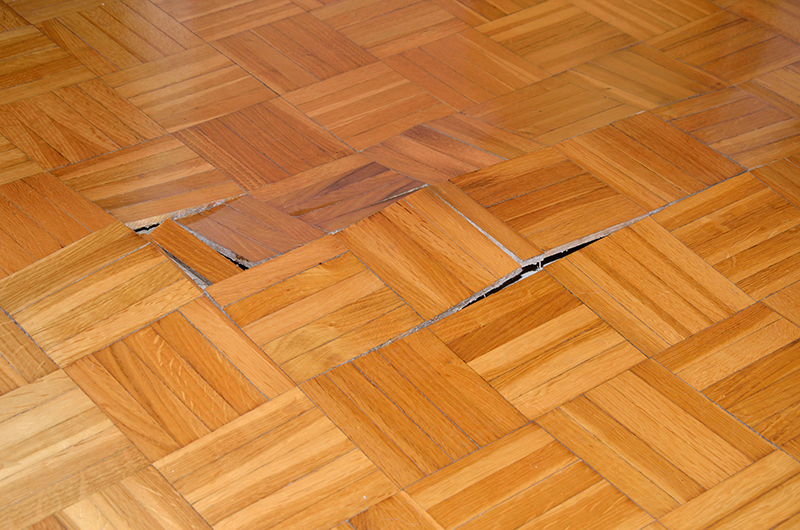In this post, we want to talk about engineered hardwood and how it is more susceptible to water damage than a traditional hardwood floor.
What is Engineered Hardwood?
For anyone that hasn’t bought a home in a while or isn’t involved in the building industry, you may be scratching your head and wondering what engineered hardwood is and how it is different from regularly hardwood — they are both wood right? Yes, but they are quite different.
Engineered hardwood is made to be extremely durable. Instead of being cut from a single piece of wood, one single plank is made up of multiple layers of wood that have been glued together. This flooring product is created to withstand warping and bowing, as well as to be easy to care for and maintain. However, when a flooding situation occurs engineered hardwood falls short of the real thing.
When Is There Water Damage?
Water is one of the biggest enemies for engineered hardwood, whether it comes in contact with it on its top surface or below. However, if you are paying attention, you can easily tell when there is a problem with your flooring that warrants investigation.
3 Signs of Water Damage
Cracked Finish
If there are cracks in the finish of your hardwood, there is a good chance that it might be due to water damage. However, water isn’t always the culprit. These cracks usually occur with the direction of the grain and will look like small ridges. They will usually cover the entire surface of the plank. This cracking is due to wood fibers that have expanded due to contact with water. Unlike real hardwood floors, engineered planks will probably remain flat because the grain of the wood pieces run in various directions; real wood planks will create a cupping shape because the wood grain goes in only one direction. You may see this type of damage around toilets, washing machines, dishwashers and other appliances that use large quantities of water.
Peaked Ends
Peaked ends can also be signs of water damage. As we mentioned in the paragraph above, engineered hardwood planks that are affected by water expand. With this expansion, the finish will crack and the ends of the board will “peak” up because of the increased compression levels against the adjacent boards. This peaking effect can also occur when water is absorbed just in the ends of the planks. Because the ends have less surface area there is less bonding area as well, making these ends more susceptible to water damage.
Delamination
Often when boards delaminate, the root of the issue is manufacturing problems and, specifically, faulty adhesive composition or usage. However, regardless of the adhesive, engineered wood floor was never meant to withstand the catastrophic nature of flooding. When a wood floor begins to delaminate, you will see the top layers of the plank pulling away from each other. Delamination can occur when the floor is wet. However, it can happen after the floor has been dried and the homeowner believes the floor has been saved. Delamination can also be a result of over drying the floor.
Now What?
There are two points that we want you to take away from this post. First, be aware of the effects of water on your engineered hardwood floor so that you can spot water damage right away and get it addressed as soon as possible. Secondly, we want to impress upon you the need to call a professional when disaster strikes. If your floor isn’t dried properly, more damage or even mold growth can be the result.



